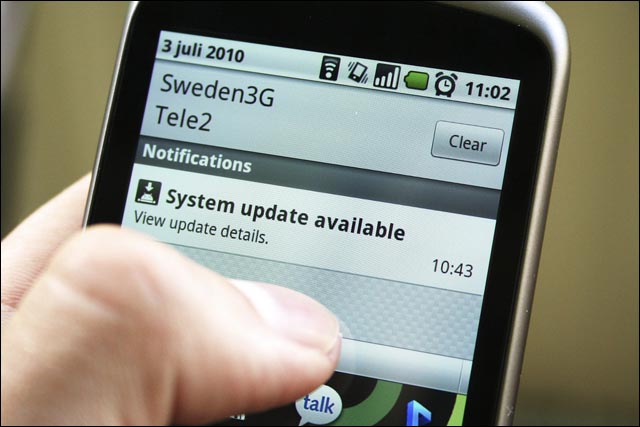blog We’re not sure if this is good news for Telstra customers who own one of the original HTC Desire handsets or not. It appears everyone concerned has finally tired of trying to get HTC’s custom Sense interface to work with the latest version 2.3 (Gingerbread) of Google’s Android platform when running on the HTC Desire. The solution? Just cut it out. Engadget and Ausdroid highlight this revealing snippet of information on Telstra’s software updates page:
“Due to the increased memory requirements of the ‘Gingerbread’ update, new software that does not include HTC’s Sense UI is being prepared.”
We’re not sure to what extent HTC is involved in the chop or how it feels about this … but it is a bit of a bittersweet pill for Telstra Desire owners to swallow, given that the Sense interface makes up much of the glitz, glamour and usability of the Taiwanese giant’s Android phones. On the other hand, Desire owners had to wait a long time to get Android 2.2 (Froyo) in the first place, and to not have Gingerbread — when your phone’s only a year old and every other new smartphone is running the new Android hotness — is a bit of a drag.
Image credit: Johan Larsson, Creative Commons


*Le sigh* Well. Looks like I’ll have to rely on the hacking community as usual.
As soon as I read this I decided to take the plunge and install cyanogen mod 7 on my HTC Desire. Why wait until August for Telstra’s OTA update when you’re basically getting vanilla Android anyway?
I’m already loving the extra space for apps now that Telstra’s bloatware is gone. The UI also feels a lot more responsive and while it’s early days battery life seems to be improved.
Personally, it’s just what I want. I haven’t been bothered to root the phone, but was just on the cusp of having to take the plunge. And now I don’t have to.
Exactly! I would have thought this is exactly what owners wanted. Stock Gingerbread is a way faster and and superior OS than Froyo plus an HTC skin, which while some find pretty, really does nothing to enhance the phone beyond HTC’s tired old live wallpapers and widgets.
Given all the improvements gingerbread brings and the fact that its clear the Deisire doesn’t have enough ram for both, this is definitely the best solution.
People keep talking about “memory” requirements.
I’I think this actually refers to internal storage rather than RAM. The Desire only has about 500 MB of internal storage, and about 250 MB of that is taken up by the OS and Sense, which is why Desire owners get the Low Storage notification on a regular basis.
I rooted my phone and repartitioned using AlphaRev N1Table. Doing this adds an extra 50-100 MB for apps.
Of course, RAM might be an issue too, just saying the amount of internal storage is pretty low, and lots of people use the term “memory” loosely.
There seems to be a very vocal anti-Sense mob, but I kind of like it and am disappointed that they haven’t been able to get it working on Gingerbread. Stripping it away makes the phone just another generic Android device, which is fine and all but not what we were sold.
That said, given we aren’t going to get Sense-on-Gingerbread I’ve gone the CM7 route. I’d rather have Sense, but there are enough little bits in 2.3.4 to make the switch worthwhile — at least until upgrade time.
Comments are closed.